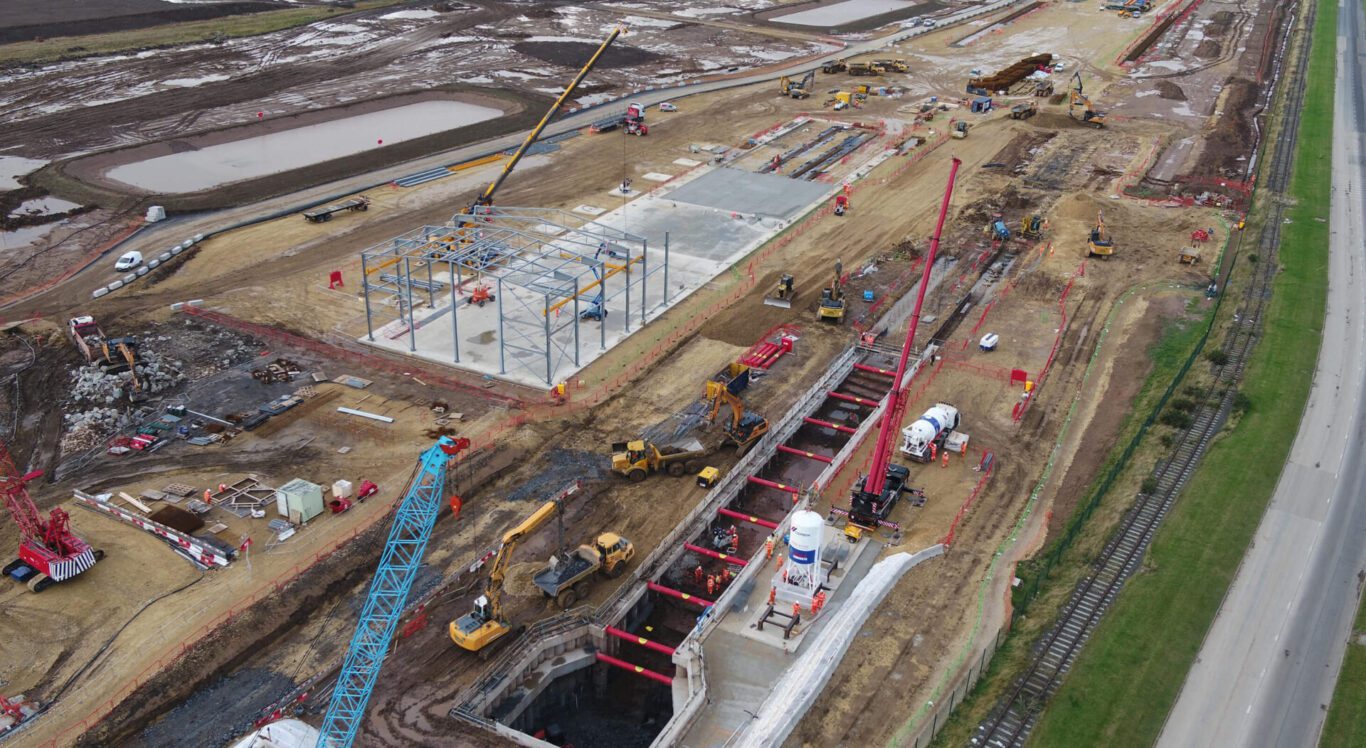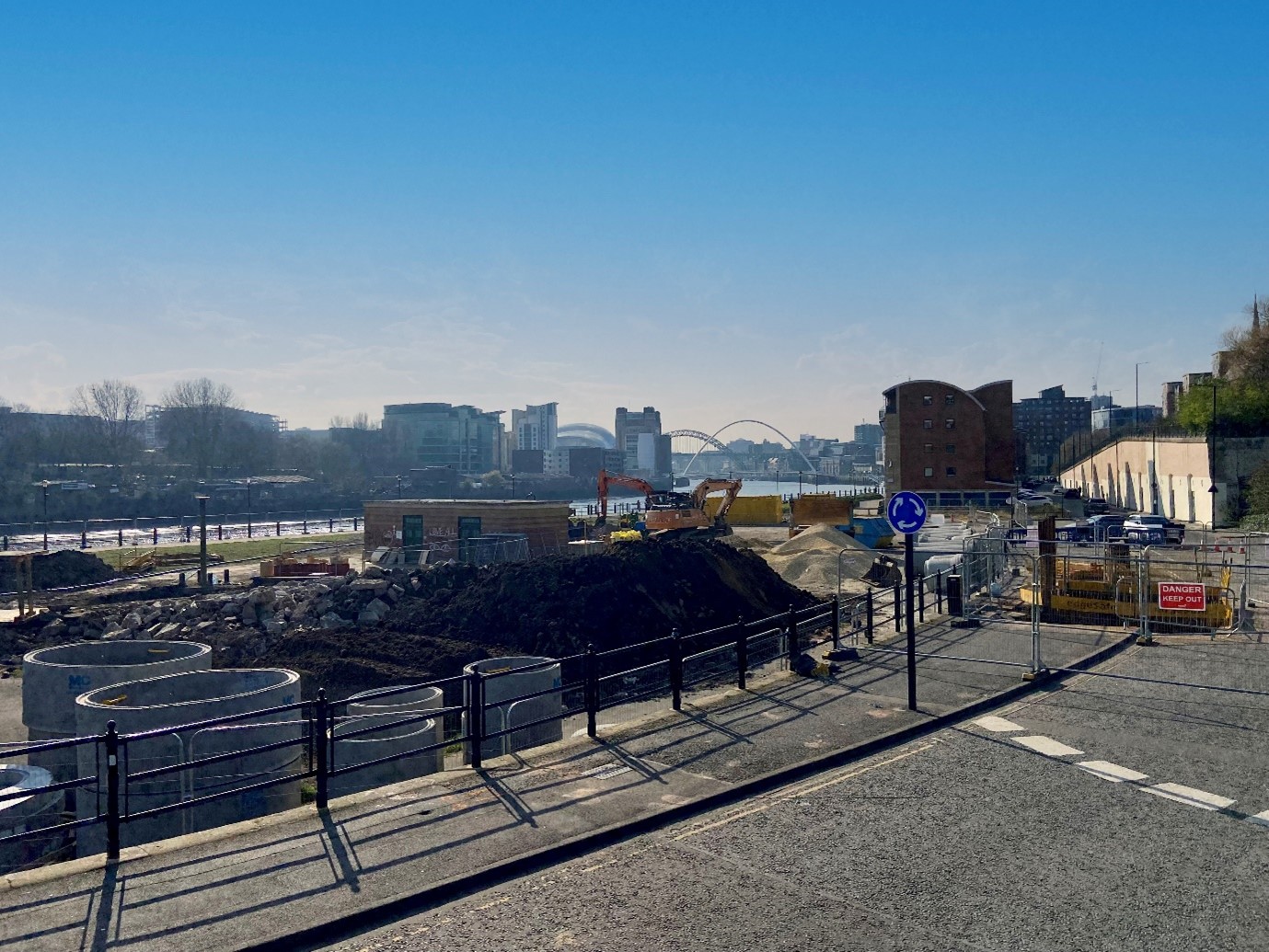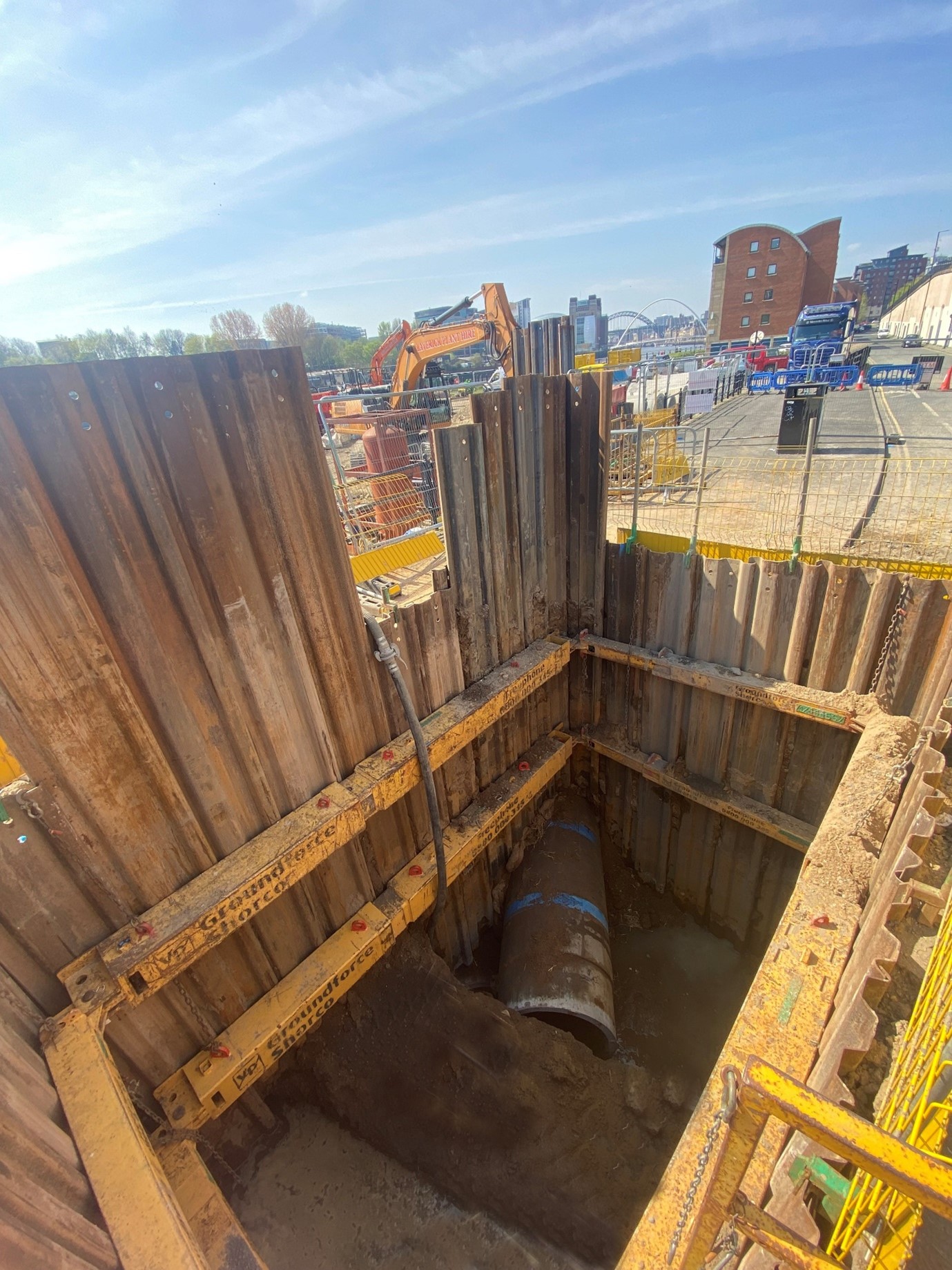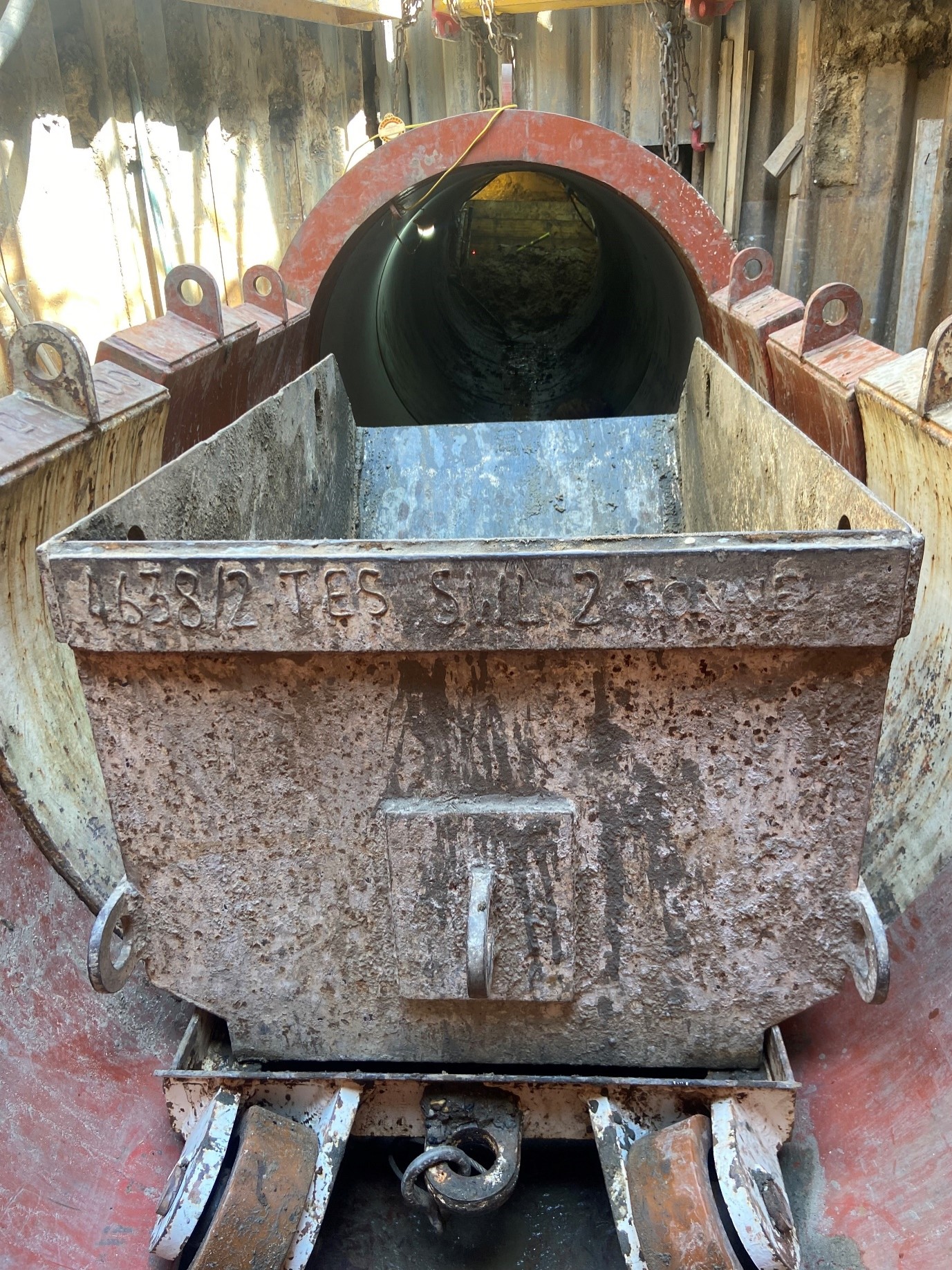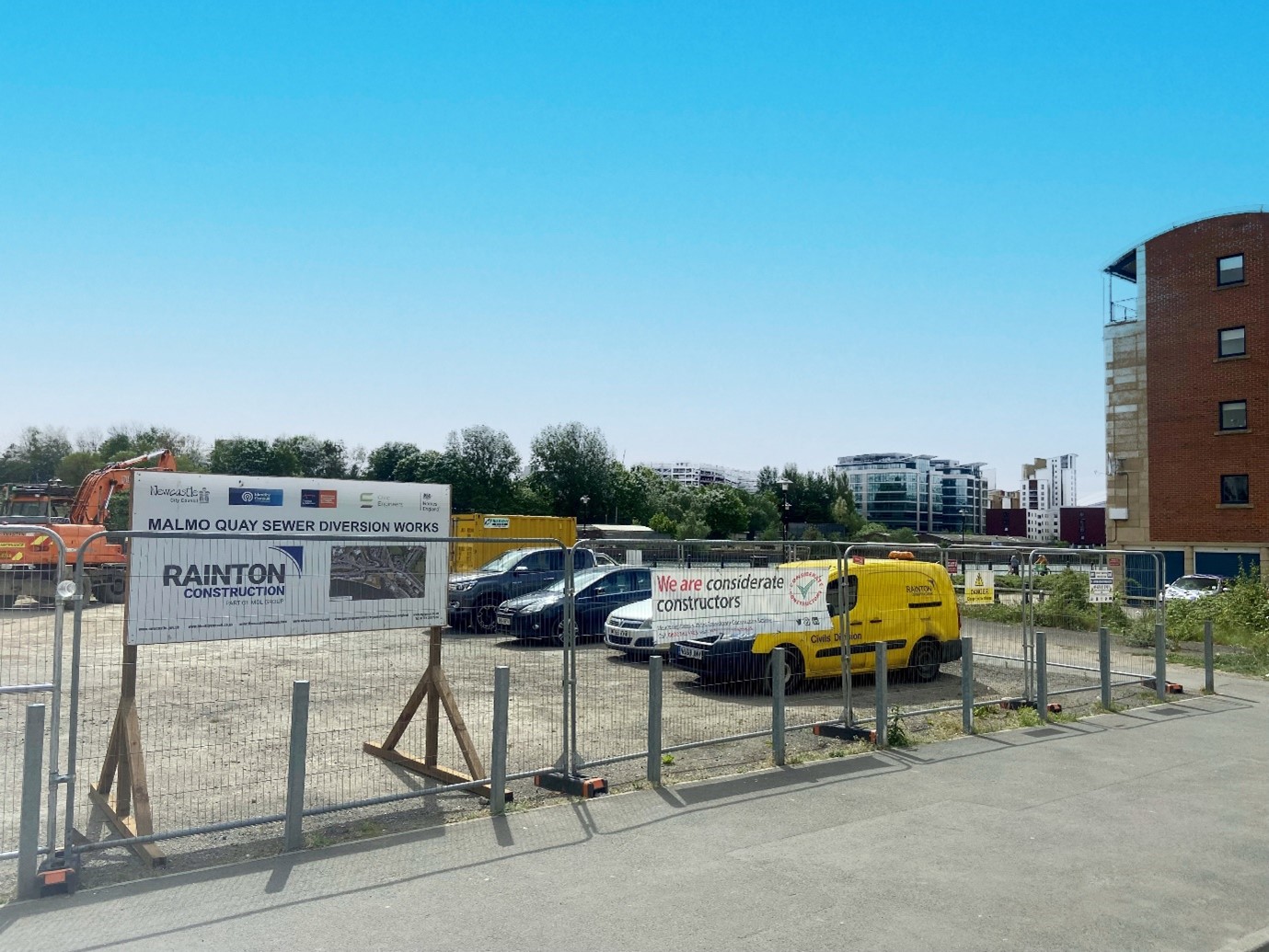Malmo Quay
Project Overview
Rainton Construction was appointed to undertake sewer diversion works at Malmo Quay to enable future development. The land sits between the mouth of the Ouseburn and Newcastle’s Quayside. It has a range of constraints, including contaminated land, mine workings, historic and redundant services, and the remains of the mineral line terminus that served the coal staithes that previously occupied the site.
Rainton Construction undertook diversions to the brick egg sewer, gravity sewer and cable routes. Surfacing was undertaken by our in-house team and the material was provided by Tynedale Roadstone. This involved all traffic management to enable the work to take place.
Challenges
Given the location and nature of this project, we had to adopt a flexible approach to working around the tide. Maximising working time during the low tides was critical to the programme’s success. Work was planned and executed systematically and methodically, aligning shifts with the tide.
We also flexed with design development, helping to establish alternative routes due to unchartered services. We were able to react quickly to the various changes and have provided valuable support in terms of project delivery against a tight timetable. As it is an urban area, we opted to undertake pipe jacking to navigate existing infrastructure, avoiding live services and going under an old stone wall. This minimised disruption to residents.
Other mitigation measures were in place to manage noise levels and access to the site for construction vehicles—all deliveries were scheduled on a ‘just in time’ basis when traffic was at its lightest. We also ensured open lines of communication about progress and operations so local people were informed throughout the project.
Sustainability
To ensure best practice beyond statutory requirements, we signed up to The Considerate Constructors Scheme. Strict targets were set for the site’s management in terms of its impact on the local community, protection of the environment, and health and safety standards.
Summary
To meet timescales and the client’s requirements, the team was agile and able to coordinate with several stakeholders, including NWG, about diversifying their assets to keep the project on track. Thanks to strong project management, we successfully completed the project on time and within budget.

